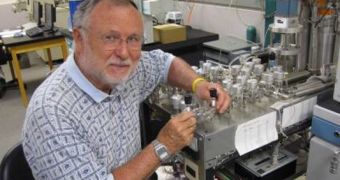In a proof-of-concept investigation, scientists in the United States were able to demonstrate the efficiency of a new method for detecting changes in atmospheric carbon dioxide concentrations.
This ability could come in very handy if countries ever decide to address global warming and climate change via an international pact. The new monitoring method could be the tool used to ensure that all signatories keep their end of the bargain.
In order to test their new method, investigators only used three CO2 monitoring stations. Even so, their technique proved capable of discovering atmospheric carbon dioxide fluctuations of up to 15 percent.
Details of the new investigation were published in the May 14 online issue of the esteemed journal Proceedings of the National Academy of Sciences (PNAS). Back in 2010, the National Academy of Sciences recommended a 5 percent accuracy level, so this research is a step in this direction.
In the future, scientists want to develop satellites that would be significantly more precise in monitoring atmospheric carbon dioxide concentrations than existing, ground-based measuring methods.
“The primary motivation for the study was to take high-quality data of atmospheric CO2 in an urban region and ask if you could predict the emissions patterns based on CO2 concentrations in the air,” explains University of Utah distinguished professor of biology and study coauthor, Jim Ehleringer.
“The ultimate use is to verify CO2 emissions in the event that the world's nations agree to a treaty to limit such emissions,” the expert goes on to say. Experts from Atmospheric and Environmental Research, Inc. and the Harvard University were also a part of the investigations team.
“The idea is can you combine concentration information – CO2 in the air near the ground – and weather patterns, which is wind blowing, and mathematically determine emissions based on that information,” the investigator explains," quoted by e! Science News.
Ehleringer believes that the 5 percent accuracy level proposed by the NAS is achievable, but says that the process is very complicated. CO2 concentrations depend on a multitude of factors and assumptions.
However, the scientist believes that these hurdles can be exceeded with sufficient work. “The model predicts more CO2 emissions than we see. That shouldn't surprise you. People are under-reporting,” he concludes.
Funds for the new investigation came from the US Department of Energy, NASA, the US National Science Foundation (NSF) and the US intelligence community.

 14 DAY TRIAL //
14 DAY TRIAL //